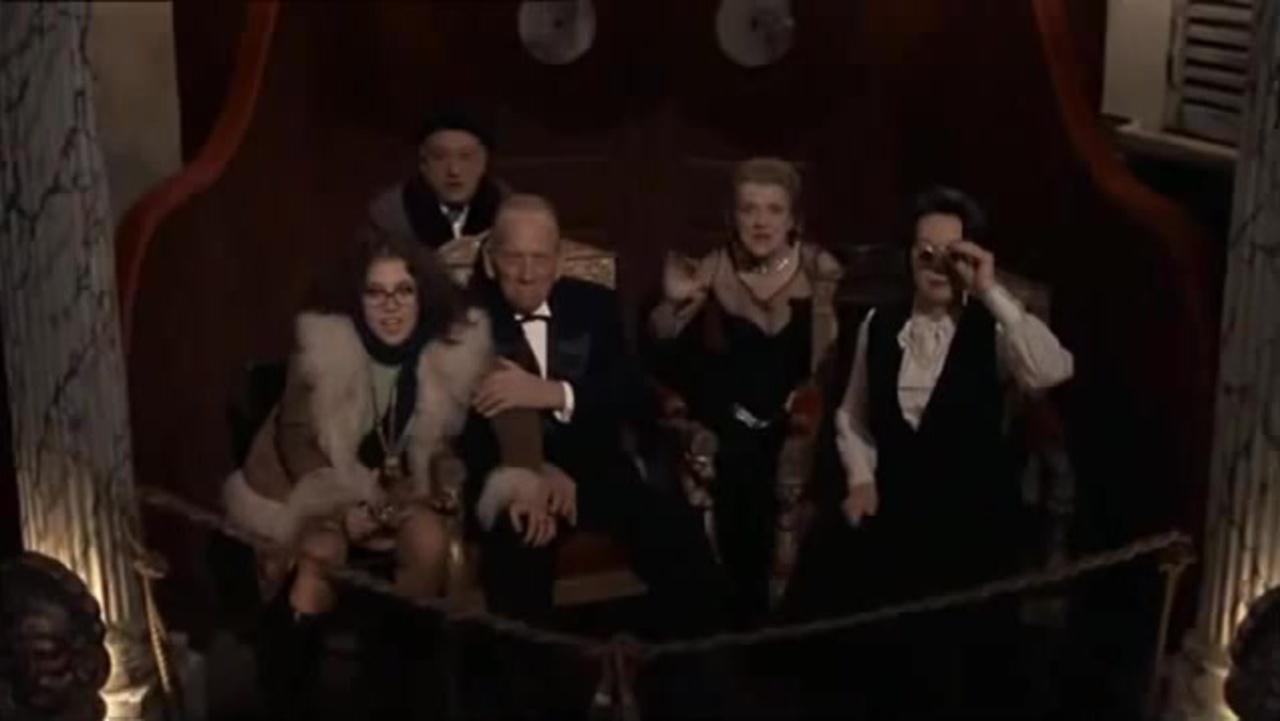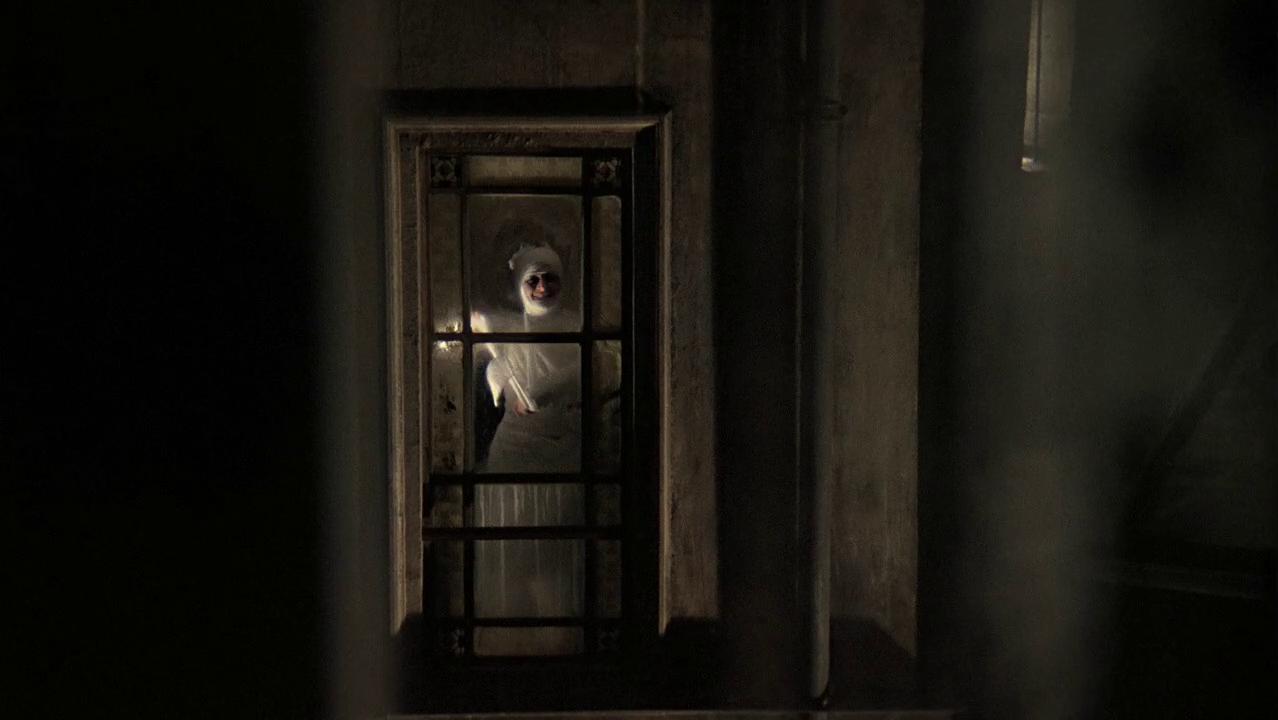Summary:
Trelkovsky is a young bachelor renting an apartment in Paris which had previously belonged to a woman who’d committed suicide. The longer he stays at the apartment, the more paranoid he becomes about the intentions of his callous neighbors.
My Thoughts:
Reader’s Note: Before diving into the claustrophobic world of The Tenant I’d like to address the inevitable elephant in the room that unfortunately comes with every Polanski film. No, I do not approve of Polanski’s personal choices in life, but I do find his work compelling. It also does not escape me that this was the last film Polanski made before becoming a fugitive from the US following the Samantha Geimer incident. Now more than ever, as the #MeToo movement erupts across Hollywood, the question of whether or not we can judge art separately from the artist hangs in the air. I don’t have an answer for that question; you must make that choice yourself. If you’d like to hear more of my thoughts the Polanski /Geimer incident, I urge you to check out my review for “Roman Polanski: Wanted and Desired”.
This film is the final and often forgotten about entry in Polanski’s Apartment Trilogy (following “Repulsion” and “Rosemary’s Baby”). The apartment trilogy is not being a conventional trilogy with a continuing storyline, instead the films center round similar themes of claustrophobia, sexual repression, paranoia and slow descent into madness. These are themes around which Polanski has built a career.
“Filthy little brat!”
When looking for an apartment to rent in Paris, Trelkovsky (Polanski, “The Fearless Vampire Killers”) wanders into a tall, narrow, gothic building where there is a room for rent on one of the upper floors. The vacancy is good news for Trelkovsky, but the reason for the opening, he soon learns, is because the previous tenant threw herself out the window (when touring the room he peers curiously out the window and sees the exact spot where she fell). Before moving in, Trelkovsky meets a curmudgeonly old neighbor (Melvyn Douglas, ”Being There” ) who complains about the woman who’d committed suicide, and all the racket she made. Trelkovsky reassures the man that he’s a quiet bachelor; the neighbor retorts, “Bachelors can be a problem, too.”
So begins the standoff.
One night, soon after moving in, Trelkovsky has a few friends over for a housewarming party, including a young woman named Stella (Isabelle Adjani, “Possession”). They drink, put on a few records, and talk quietly amongst themselves, but apparently, not quietly enough, for soon the neighbors are rapping on the door and calling for the music to be shut off and his friends to leave. Desperate to make a good impression, Trelkovsky decides he’ll keep to himself when he’s home, so as to make as little noise as possible, but in doing so he retreats into isolation. Paranoia sets in. Was there someone watching him from the dark apartment across the road? Is there someone waiting in the stairway outside his door? Who were the people wandering down in the shadows of the street? Is he being too loud as he walks about? Are his neighbors in on some malevolent plot together? What really happened to the woman who lived in the apartment before him?
Many horror films today shy away from the psychological reasons of why things scare us, instead opting for blood, gore and nudity (look at half the films included in 31 Nights of Thrills). Those films are fine if you’re looking to kill some time on a rainy afternoon. By the time you go to bed, you’ll have forgotten about the horrors you saw earlier that day. Not so with Polanski’s films. Polanski shies away from gore and guts, and instead he likes to linger on the terror of confusion. He likes to play with your emotions and make you wonder what’s gathering in the dark corners. Many times the viewer isn’t sure what is real and what isn’t. Even after the credits roll there are some questions left unanswered, or answered ambiguously. The confusion that Polanski creates for the character bleeds from the screen into the viewer’s mind, seeping deeper and lingering longer than any splatterfest today.
Fans of Polanski’s work will recognize the deliberate pacing associated with his other films (“Rosemary’s Baby” in particular); the film starts off slowly before building to its shocking, horrific climax. Polanski dazzles in taking the reins as director, lead actor, and co-writer of this brilliant piece of cinema. As his character sinks further into madness, his performance never slips. He lingers on the things that make us uncomfortable, and delights in shocking us with a disturbing ending. The viewer never really knows what is going to happen next, and even when we think we’ve figured it out, there always seems to be something else we hadn’t expected. As a horror film it succeeds in shocking, exhilarating and disturbing the audience.
Verdict
While I cannot recommend “The Tenant” to everyone, there are certainly people who will see it for the masterful work of art that it is. The film is slow but it is very rewarding for those who stick it out to the end. For fans of 70’s cinema, claustrophobic thrillers and twisty plots this film will be a delight… maybe not a delight- but certainly a thrill.
Review Written By:






